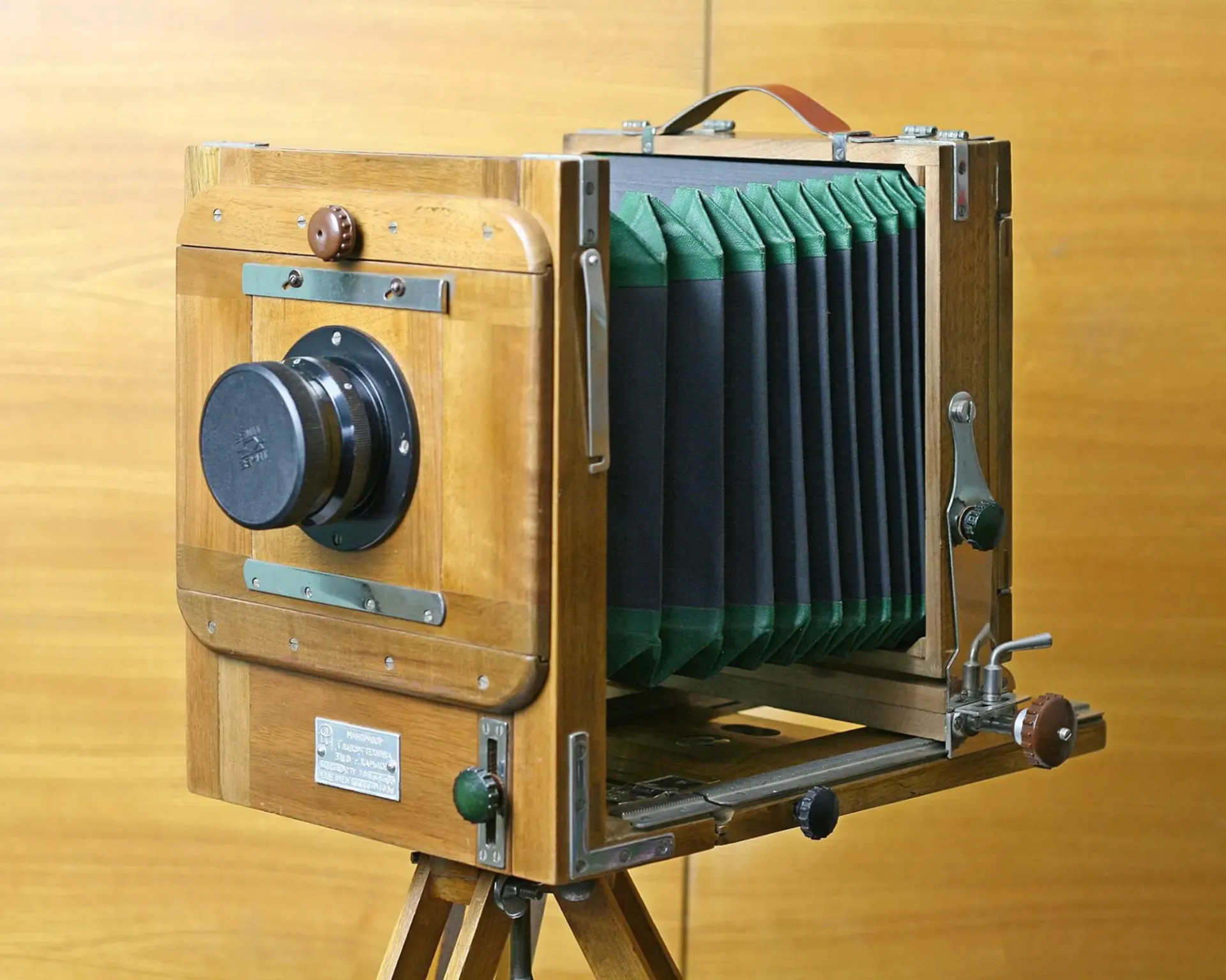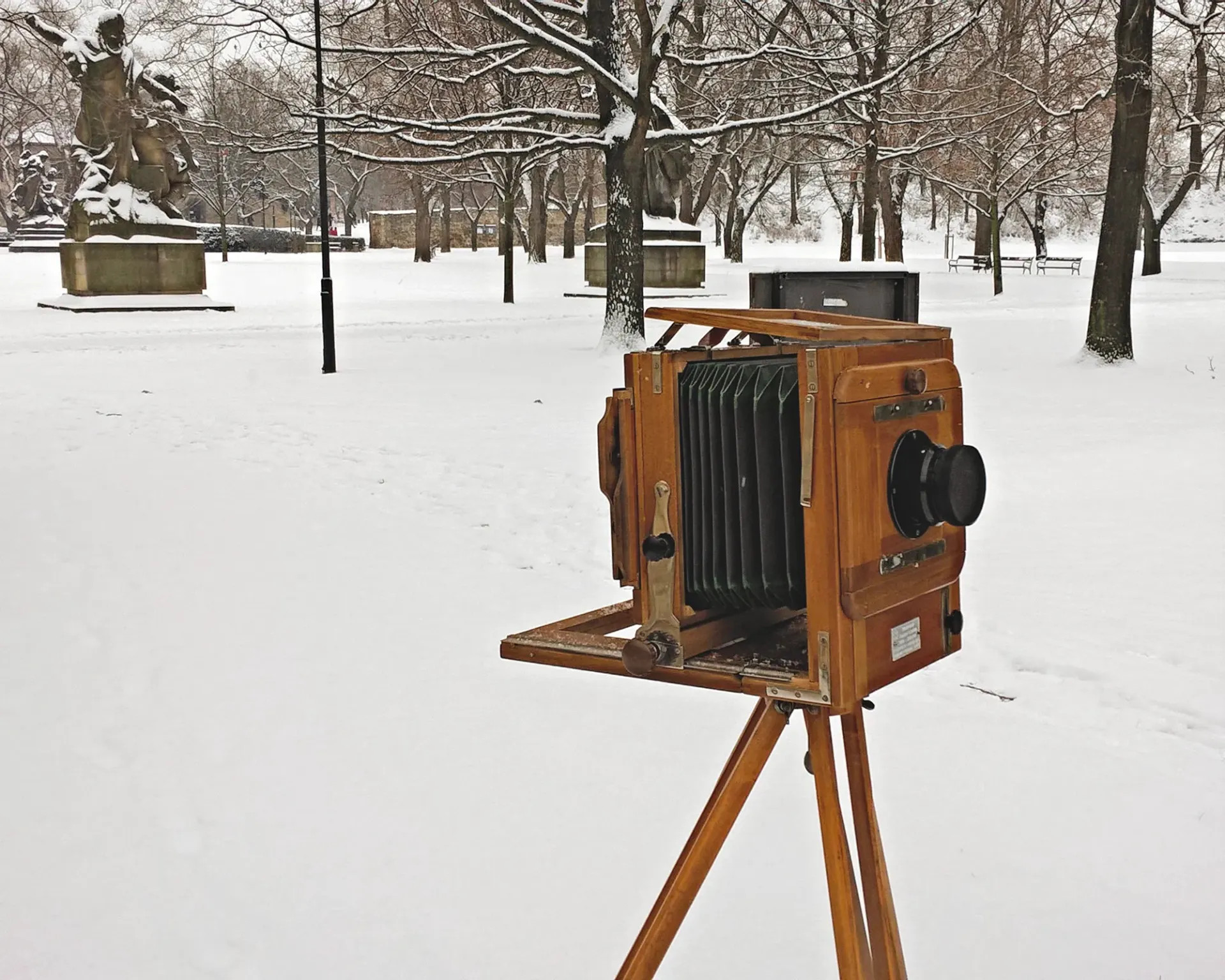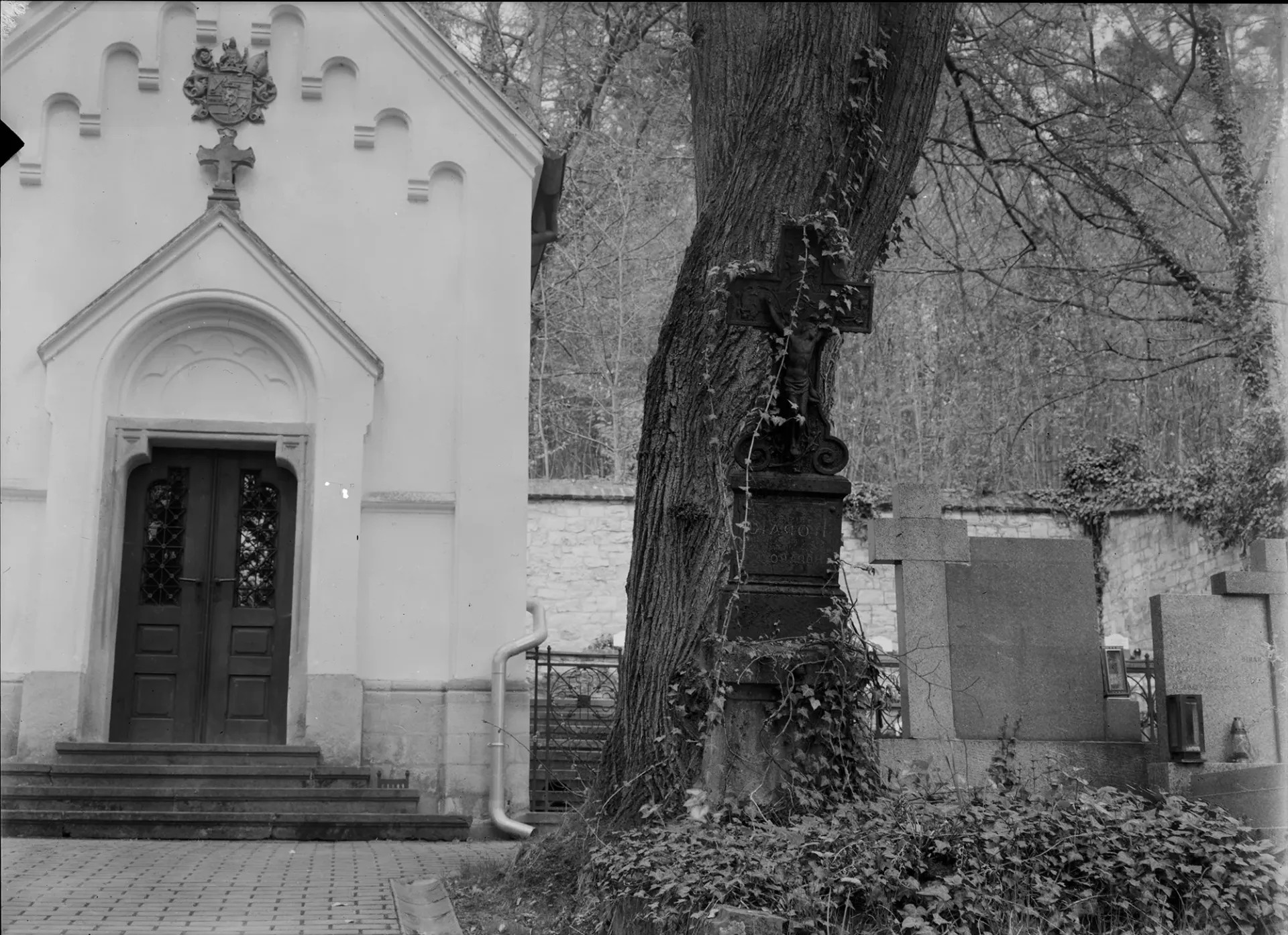#1 FKD 13x18cm
You never forget your first. Finally, you stop polishing and touching it endlessly at home, but find the courage to take it outside and erect it under the curious stares of passers-by. I did it in a cemetery and it was nothing but a 13x18cm FKD camera.
USSR, the land of mud and wooden spoons, spent several decades churning out its one and only line of wooden cameras: the FKD (I could feel it in my bones that this acronym meant something, but I couldn't dig it up. "Fucking Klunky Device" maybe?).
- Update: turns out the bones didn't lie. A friend pointed out that it really does stand for something: ФКД – фотокамера дорожная – literally road camera or simply a travel wooden photo brick.
- The design follows the classic and timeless tradition of German Reisekameras, made since the 1860s, with their final Soviet iteration being the FKD that lasted into the 1980s. They were produced in sizes from 13×18cm up to 30×40cm (the largest, however, wasn't foldable and was labeled FKP/ФКП, intended more for studio or repro work). I could feel it in my bones...
In any case, this was the magnum opus of Soviet photo-carpentry, fitted with a basic Industar 210mm f4.5 lens - both light and compact enough to actually fulfill the whole "portable" thing. The camera often came with a stylistically matching tripod and film holders, sometimes even a travel case (what the Kharkov factory hath joined together, let no man put asunder!). And like everything Soviet, it was manufactured in the millions, which, compared to other makers, is still pleasantly reflected in the price today.
Which, unfortunately, is more or less where the positives come to an end. Finding a holder that is light-tight and doesn't leak is not so easy (or "flow," depending on who you ask - both are absurd expressions when it comes to light, but that's just the way we talk in our oh-so-elite circles).
- Although, why shouldn't light actually flow? There's the photometric quantity of luminous flux (Φ), and what do fluxes do? They flow. Case closed.
- As for light blowing into the holders... maybe if the wind is strong enough it'll blow a few photons into the holder. They're terribly light, after all. They'll stick to the negative and make those little overexposed patches. That's just science.
The tripod is about as stable as mounting the camera on a puppy with ADHD, and with the camera itself you can't be sure if it was made in millimeters, Viennese ells, Russian versts or just beaten into shape with a rock. The whole contraption shakes like an old drunk, but considering the factories mostly built furniture, and maybe also tractors, tanks, and knitting needles, the result is actually kind of impressive. The camera smells of vodka and when you lift the ground glass to insert the holder, faint strains of The Internationale occasionally drifting from within, lost on the wind.
Of course, you can always turn it into a lamp or a mushroom incubator, but… that would be a shame. If it doesn't collapse on your way to the field - just like the USSR did - it's actually a fine little box for your first large-format steps, at least in calm weather. It'll teach you what that glass display at the back is for and why everything on it is upside down, where to stick that oversized SD card and what the accordion in the middle is supposed to do. A sophisticated, precise machine full of possibilities would almost be wasted on a beginner, but this humble wooden cube will patiently walk you through the basics, serving as a kind of splinter-ridden mentor. Wonder, laughter, and a few slivers in your hands are guaranteed - and that's why I remember it fondly. My first large format. Thanks, FKD.


